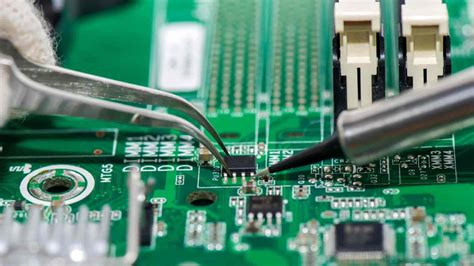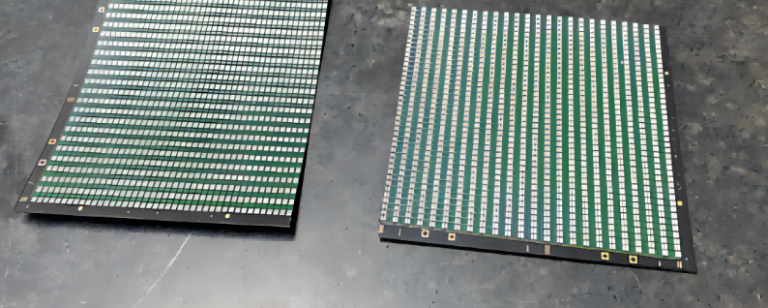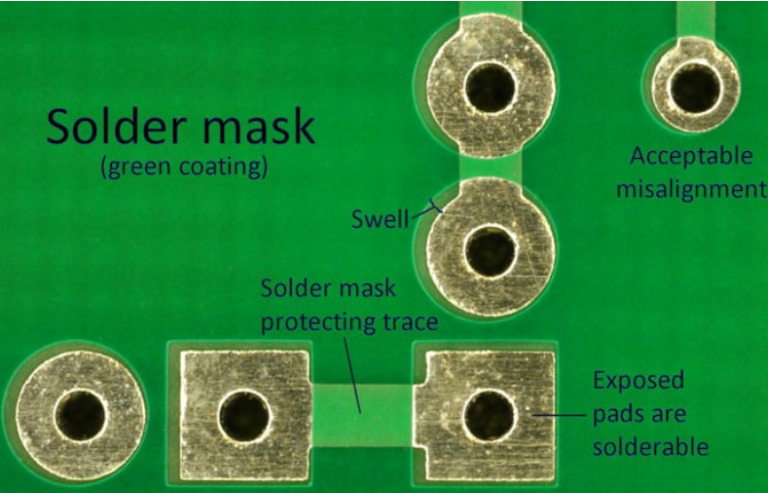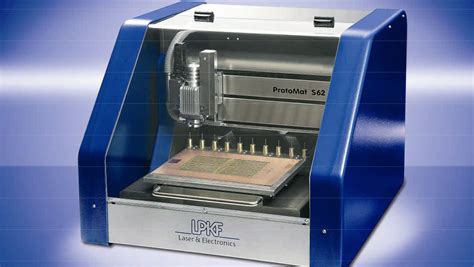Flex pcb aluminum
Advantages Of Using Aluminum In Flex PCBs
The integration of aluminum into flexible printed circuit boards (flex PCBs) has emerged as a significant advancement in the electronics industry, offering a multitude of advantages that enhance both performance and reliability. As the demand for more efficient and compact electronic devices continues to grow, the use of aluminum in flex PCBs presents a compelling solution to meet these evolving needs.
One of the primary benefits of incorporating aluminum into flex PCBs is its excellent thermal conductivity.
Aluminum’s ability to efficiently dissipate heat is crucial in preventing overheating, which can lead to device failure. This property is particularly advantageous in high-power applications where managing thermal loads is essential. By effectively spreading heat across the circuit, aluminum helps maintain optimal operating temperatures, thereby extending the lifespan of electronic components and improving overall device reliability.
In addition to thermal management, aluminum offers significant mechanical advantages.
Its inherent strength and durability provide robust support to the flexible substrate, enhancing the structural integrity of the PCB. This is particularly beneficial in applications where the circuit board is subjected to frequent bending or flexing, such as in wearable technology or foldable devices. The use of aluminum ensures that the flex PCB can withstand mechanical stress without compromising its functionality, thus ensuring long-term performance and reliability.
Furthermore, aluminum’s lightweight nature contributes to the overall reduction in the weight of electronic devices.
This is a critical factor in the design of portable and handheld gadgets, where minimizing weight is essential for user comfort and device portability. By incorporating aluminum, manufacturers can achieve a delicate balance between durability and weight, resulting in products that are both robust and easy to handle.
Moreover, aluminum’s cost-effectiveness is another compelling reason for its use in flex PCBs.
Compared to other metals like copper, aluminum is more abundant and less expensive, making it an economically viable option for large-scale production. This cost advantage does not come at the expense of performance, as aluminum still provides excellent electrical conductivity and thermal management properties.
Consequently, manufacturers can produce high-quality flex PCBs at a lower cost, which can be particularly beneficial in competitive markets where cost efficiency is paramount. Additionally, aluminum’s compatibility with existing manufacturing processes further enhances its appeal.
It can be easily integrated into current production lines without requiring significant modifications, thereby reducing the time and cost associated with transitioning to new materials. This seamless integration allows manufacturers to quickly adopt aluminum in their flex PCB designs, accelerating the development and deployment of innovative electronic products.
Finally, the environmental benefits of using aluminum should not be overlooked.
Aluminum is highly recyclable, which aligns with the growing emphasis on sustainability in the electronics industry. By choosing aluminum, manufacturers can contribute to reducing electronic waste and promoting a circular economy. This not only enhances the environmental credentials of their products but also meets the increasing consumer demand for eco-friendly solutions.
In conclusion, the use of aluminum in flex PCBs offers a range of advantages that make it an attractive choice for modern electronic applications. Its superior thermal and mechanical properties, combined with cost-effectiveness and environmental benefits, position aluminum as a key material in the advancement of flexible electronics. As technology continues to evolve, the role of aluminum in enhancing the performance and sustainability of flex PCBs is likely to become even more pronounced.

Design Considerations For Aluminum-Based Flex PCBs
When designing aluminum-based flexible printed circuit boards (PCBs), several critical considerations must be taken into account to ensure optimal performance and reliability. These unique PCBs combine the flexibility of traditional flex circuits with the thermal and mechanical advantages of aluminum, making them suitable for a wide range of applications, particularly in environments where heat dissipation and structural integrity are paramount.
To begin with, the choice of materials plays a pivotal role in the design of aluminum-based flex PCBs.
The aluminum substrate provides excellent thermal conductivity, which is essential for applications involving high power or heat generation. This characteristic allows for efficient heat dissipation, thereby enhancing the longevity and performance of electronic components. However, the selection of the appropriate aluminum alloy is crucial, as different alloys offer varying degrees of thermal and mechanical properties. Designers must carefully evaluate the specific requirements of their application to choose the most suitable alloy.
In addition to material selection, the thickness of the aluminum layer is another important factor.
While a thicker aluminum layer can improve heat dissipation and mechanical strength, it may also reduce the flexibility of the PCB. Therefore, a balance must be struck between these competing requirements. Designers often employ simulation tools to model the thermal and mechanical behavior of the PCB, allowing them to optimize the thickness of the aluminum layer for their specific application.
Moreover, the design of the circuit layout is critical in ensuring the functionality and reliability of aluminum-based flex PCBs.
The layout must accommodate the unique properties of the aluminum substrate, such as its thermal expansion coefficient, which differs from that of traditional PCB materials. This difference can lead to mechanical stress during thermal cycling, potentially causing delamination or cracking. To mitigate these risks, designers often incorporate stress-relief features, such as curved traces and strategic placement of vias, to accommodate the expansion and contraction of the materials.
Furthermore, the choice of adhesive and dielectric materials is essential in the construction of aluminum-based flex PCBs.
These materials must not only provide strong adhesion between the aluminum substrate and the copper traces but also possess suitable thermal and electrical properties. The dielectric layer, in particular, must have a high thermal conductivity to facilitate heat transfer from the copper traces to the aluminum substrate. Additionally, the adhesive must be able to withstand the thermal and mechanical stresses encountered during the PCB’s operation.
Another consideration is the manufacturing process, which can significantly impact the performance and reliability of aluminum-based flex PCBs.
The process must be carefully controlled to ensure that the aluminum substrate is not damaged during fabrication. Techniques such as laser cutting and precision drilling are often employed to achieve the necessary accuracy and precision. Furthermore, the assembly process must account for the thermal expansion properties of the aluminum substrate to prevent warping or misalignment of components.
In conclusion, the design of aluminum-based flex PCBs requires a comprehensive understanding of the interplay between materials, thermal management, mechanical properties, and manufacturing processes. By carefully considering these factors, designers can create PCBs that leverage the advantages of aluminum substrates while maintaining the flexibility and reliability required for demanding applications. As technology continues to advance, the development of innovative materials and design techniques will further enhance the capabilities of aluminum-based flex PCBs, opening new possibilities for their use in a variety of industries.

Applications Of Flex PCBs With Aluminum Substrates
Flex PCBs, or flexible printed circuit boards, have revolutionized the electronics industry by offering a versatile and adaptable solution for various applications. When combined with aluminum substrates, these PCBs provide enhanced thermal management and mechanical stability, making them ideal for a wide range of uses. The integration of aluminum substrates into flex PCBs addresses the growing demand for efficient heat dissipation in electronic devices, which is crucial for maintaining performance and longevity. As electronic components become increasingly compact and powerful, the need for effective thermal management solutions has never been more critical. Aluminum, known for its excellent thermal conductivity, serves as an effective heat spreader, ensuring that heat generated by electronic components is efficiently dissipated. This capability is particularly beneficial in high-power applications, where excessive heat can lead to device failure or reduced performance.
Moreover, the use of aluminum substrates in flex PCBs enhances their mechanical strength, providing a robust platform that can withstand the rigors of various environments.
This is particularly advantageous in applications where the PCB is subject to mechanical stress or vibration, such as in automotive or aerospace industries. The combination of flexibility and durability allows these PCBs to be used in dynamic applications where traditional rigid PCBs would fail. In addition to thermal and mechanical benefits, flex PCBs with aluminum substrates offer significant design flexibility. The ability to bend and conform to different shapes and spaces allows engineers to create more compact and efficient designs. This is especially important in modern electronics, where space is often at a premium.
Devices such as smartphones, wearable technology, and medical implants benefit from this flexibility, as it enables the integration of complex circuitry into limited spaces without compromising performance.
Furthermore, the lightweight nature of aluminum contributes to the overall reduction in weight of electronic devices, which is a critical factor in applications such as drones and portable electronics. The reduced weight not only enhances the portability of these devices but also improves their energy efficiency, as less power is required to operate them.
This is particularly relevant in battery-powered devices, where energy conservation is paramount.
The environmental benefits of using aluminum substrates in flex PCBs should not be overlooked. Aluminum is a highly recyclable material, and its use in electronics aligns with the growing emphasis on sustainability and environmental responsibility. By incorporating recyclable materials into electronic designs, manufacturers can reduce their environmental footprint and contribute to a more sustainable future.
In conclusion, the applications of flex PCBs with aluminum substrates are vast and varied, driven by the need for efficient thermal management, mechanical stability, and design flexibility. As technology continues to advance, the demand for innovative solutions that address these challenges will only increase. Flex PCBs with aluminum substrates are well-positioned to meet these demands, offering a reliable and efficient solution for a wide range of industries. From consumer electronics to automotive and aerospace applications, the benefits of these advanced PCBs are clear, making them an essential component in the development of next-generation electronic devices. As the industry continues to evolve, the role of flex PCBs with aluminum substrates will undoubtedly expand, paving the way for new and exciting technological advancements.

Thermal Management In Aluminum Flex PCBs
In the realm of modern electronics, the demand for compact, efficient, and reliable devices has led to significant advancements in printed circuit board (PCB) technology. Among these innovations, flexible PCBs have emerged as a pivotal solution, offering enhanced design flexibility and space-saving benefits. However, as electronic devices become more powerful, they generate increased amounts of heat, necessitating effective thermal management strategies. This is where aluminum flex PCBs come into play, providing a unique combination of flexibility and superior thermal conductivity.
Aluminum flex PCBs are designed to address the thermal challenges associated with high-performance electronic components.
By integrating aluminum as a core material, these PCBs leverage the metal’s excellent thermal conductivity to dissipate heat more efficiently than traditional materials. This capability is crucial in preventing overheating, which can lead to reduced performance, component failure, or even catastrophic damage to the entire system. Consequently, aluminum flex PCBs are increasingly utilized in applications where thermal management is a critical concern, such as in LED lighting, automotive electronics, and power electronics.
The integration of aluminum into flexible PCBs is not merely about enhancing thermal performance; it also involves a careful balance of mechanical and electrical properties.
Aluminum’s inherent strength and durability contribute to the overall robustness of the PCB, making it suitable for environments subject to mechanical stress or vibration. Moreover, the flexibility of these PCBs allows for innovative design configurations, enabling engineers to create more compact and lightweight devices without compromising on performance or reliability.
Transitioning from traditional materials to aluminum in flex PCBs also presents certain challenges that must be addressed to fully harness their benefits.
One such challenge is the potential for increased weight, as aluminum is denser than other materials typically used in PCBs. However, this can be mitigated through strategic design choices, such as optimizing the thickness of the aluminum layer or incorporating lightweight substrates. Additionally, the manufacturing process for aluminum flex PCBs requires specialized techniques to ensure proper adhesion and electrical insulation between layers, which can add complexity and cost to production.
Despite these challenges, the advantages of aluminum flex PCBs in thermal management are undeniable.
Their ability to efficiently dissipate heat not only enhances the longevity and reliability of electronic devices but also allows for higher power densities and faster processing speeds. This is particularly beneficial in applications where space is limited, and heat dissipation is paramount, such as in wearable technology and compact consumer electronics.
Furthermore, the use of aluminum flex PCBs aligns with the growing emphasis on sustainability in electronics manufacturing.
Aluminum is a highly recyclable material, and its use in PCBs can contribute to reducing the environmental impact of electronic waste. By facilitating more efficient thermal management, these PCBs also help in lowering energy consumption, as devices can operate more efficiently without the need for additional cooling mechanisms.
In conclusion, aluminum flex PCBs represent a significant advancement in the field of thermal management for electronic devices. By combining the flexibility of traditional flex PCBs with the superior thermal properties of aluminum, they offer a robust solution to the challenges posed by modern high-performance electronics. As technology continues to evolve, the role of aluminum flex PCBs in ensuring efficient thermal management will undoubtedly become increasingly important, paving the way for more innovative and sustainable electronic designs.







